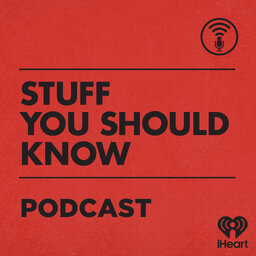Space Junk, Ahoy!
The orbits hundreds to thousands of miles above Earth are littered with garbage. Space garbage, sure, but it’s still garbage. Littering in space is bad enough but it poses practical problems too – like space junk crashing into satellites or astronauts.
Learn more about your ad-choices at https://www.iheartpodcastnetwork.com
 Stuff You Should Know
Stuff You Should Know


